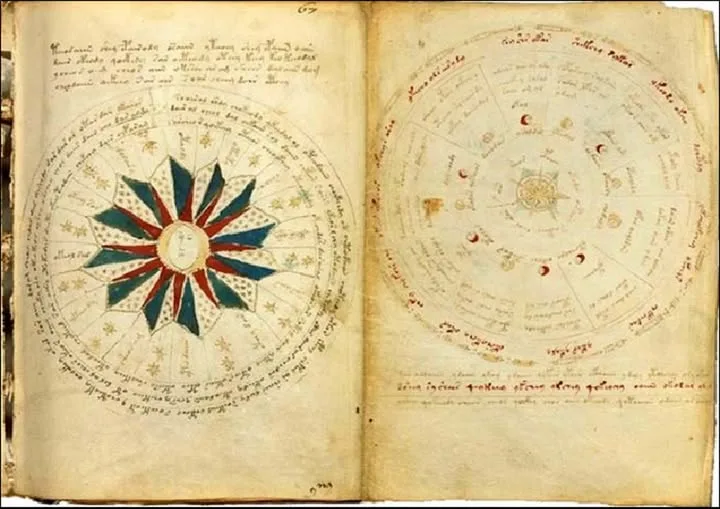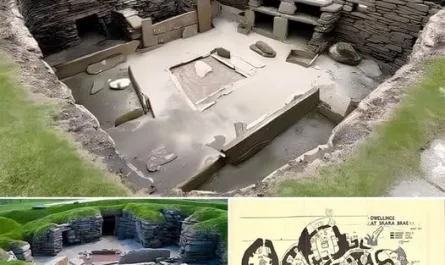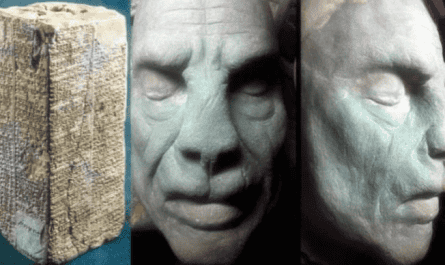Tucked away in the vaults of Yale University’s Beinecke Rare Book & Manuscript Library lies a 600-year-old enigma that has baffled scholars, cryptographers, and scientists for over a century: the Voynich Manuscript. Named after Wilfrid Voynich, the antiquarian who acquired it in 1912, this mysterious book, dated to around 1400 AD by radiocarbon analysis, is written in an unknown script and adorned with illustrations of otherworldly plants, cosmic diagrams, and cryptic figures. Its undeciphered language and alien-like imagery have sparked wild theories—some even whisper it’s an extraterrestrial artifact. Is it the work of a mad genius, a coded relic of a lost civilization, or something beyond our world? Let’s dive into the mystery of the Voynich Manuscript and why it continues to captivate imaginations.

A Manuscript Shrouded in Mystery
The Voynich Manuscript, a 240-page vellum codex, is unlike any other book. Written in a flowing, unfamiliar script, it uses an alphabet that matches no known language or writing system. Despite exhaustive efforts by linguists, codebreakers, and artificial intelligence, the text remains undeciphered, defying all attempts to crack its meaning. In 2014, linguist Stephen Bax claimed it might be a pre-Roman language, possibly linked to ancient Middle Eastern scripts, but his theory lacked evidence and faded from academic discourse. Other claims of decoding—often sensationalized by media—have similarly fallen short, leaving the manuscript’s language an enduring puzzle.
What sets the Voynich apart is not just its script but its vivid, hand-drawn illustrations, which divide the book into distinct sections: botanical, astronomical, biological, cosmological, and pharmaceutical. These images, while detailed, deepen the mystery rather than resolving it. They depict scenes and objects that seem strangely familiar yet defy earthly categorization, fueling speculation about the manuscript’s origins.
Botanical Enigmas: Plants from Another World?
The first section, comprising roughly half the manuscript, appears to be a botanical treatise, with detailed drawings of plants, roots, and leaves. But here’s the catch: according to botanists, these plants don’t exist on Earth. While some resemble known species—like the sunflower or water lily—their forms are subtly alien, with impossible combinations of roots, leaves, and flowers. Are these fantastical creations of an imaginative artist, or do they document flora from a place unknown to us? The precision of the drawings suggests purpose, yet their otherworldly nature baffles experts.
Cosmic and Biological Curiosities
Other sections are equally perplexing. The astronomical section features diagrams of stars, planets, and celestial configurations, some resembling zodiacs or astrolabes, but with unfamiliar constellations. The biological section depicts nude female figures bathing in interconnected pools or pipes, resembling an organic plumbing system or perhaps a fantastical depiction of human anatomy. Some drawings evoke strange machinery—light bulb-like structures or engine-like tubes—that seem anachronistic for the 15th century. Are these symbolic, scientific, or something else entirely?
The pharmaceutical section, with its drawings of herbs and vessels, suggests recipes or alchemical knowledge, but the accompanying text offers no clues. The manuscript’s refusal to align with known traditions—be it medieval herbals, astrology, or medicine—has led some to speculate it could be a copy of an older, perhaps non-European text, reinterpreted by a medieval scribe.
Theories and Speculation: Mad Scientist or Ancient Relic?
The Voynich Manuscript’s origins are a hotbed of debate. Was it penned by a visionary polymath, a medieval hoaxer, or an amanuensis transcribing an ancient, lost text? Some propose it’s a cipher, encoding secrets in a language known only to its creator. Others suggest it’s a constructed language, a lingua ignota like that of Hildegard of Bingen, meant for mystical or esoteric purposes. The extraterrestrial theory, while fringe, persists due to the manuscript’s alien-like imagery and unreadable script, though no evidence supports an off-world origin.
A historical parallel adds intrigue. Plato’s account of Solon, a 6th-century BC Greek statesman, describes an ancient Egyptian text from Sais that spoke of a lost civilization, translated as “Atlantis” in Greek. Could the Voynich Manuscript be a similar relic, preserving knowledge from a forgotten culture? Without a translator—unlike Solon’s priests—the truth remains elusive.
Yale’s Open Challenge
Since its acquisition by Yale in 1969, the Voynich Manuscript has been digitized and made publicly available as a high-resolution PDF, inviting global efforts to decode it. Cryptographers, linguists, and amateur sleuths have tried everything from statistical analysis to machine learning, yet the text resists interpretation. Its vellum, confirmed by radiocarbon dating to the early 15th century, and its detailed illustrations suggest it was a costly, deliberate creation—not a casual prank. But by whom, and why?
A Legacy of Wonder
The Voynich Manuscript’s allure lies in its defiance of explanation. It challenges our assumptions about language, science, and history, hinting at possibilities beyond our current understanding. Whether it’s a medieval scholar’s fever dream, a coded treatise, or a relic of an unknown civilization, its pages hold a magnetic pull. As evidence mounts for lost cultures—like Atlantis or the recently discovered megaliths of La Torre-La Janera—the Voynich keeps us guessing, a book that feels not entirely of this world. Visit Yale’s digital archive to explore it yourself, and join the quest to unravel one of history’s greatest enigmas.





